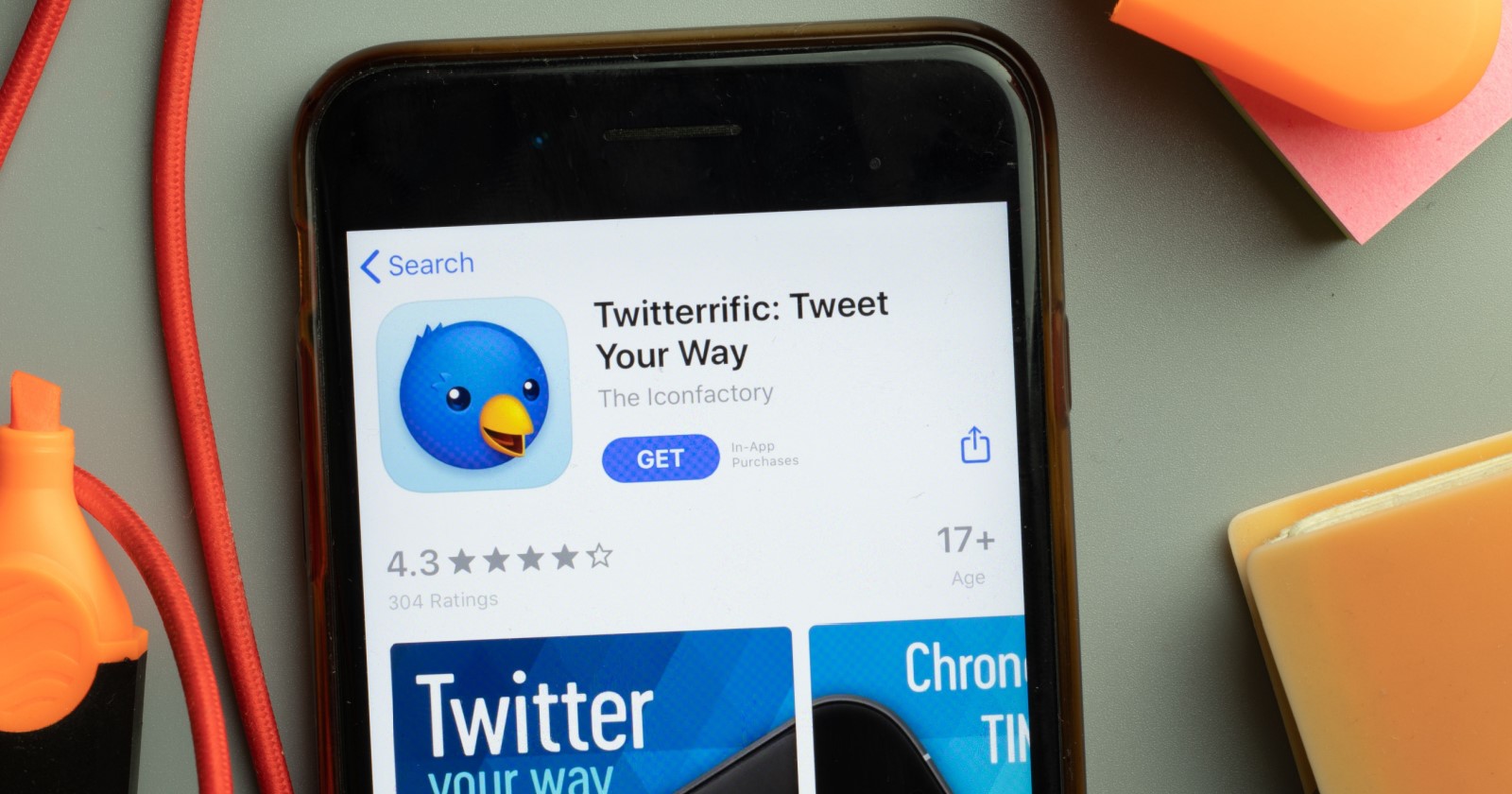Less choice and diversity
Twitter’s recent decision to ban third-party apps is a major blow to the platform’s users. One of the biggest advantages of Twitter has always been the wide range of third-party applications available that cater to different needs and preferences. These apps offered unique features, advanced functionalities, and customizable interfaces that allowed users to have a more personalized Twitter experience. However, with the ban on these apps, users are left with a limited selection of features and functionalities offered by Twitter’s own app.
The loss of choice and diversity is a significant setback for users who have grown accustomed to the variety offered by third-party apps. These apps allowed users to curate their Twitter experience based on their specific preferences and needs. Whether it was for managing multiple accounts, scheduling tweets, or analyzing engagement metrics, there was an app available for every requirement. By banning third-party apps, Twitter has limited the choices available to users, forcing them to conform to the features and functionalities provided by the platform’s official app.
Furthermore, third-party apps often provided a more user-friendly and intuitive interface compared to Twitter’s own app. They offered customization options that allowed users to tailor the interface according to their liking. This freedom of choice helped enhance the overall user experience. With the ban on third-party apps, users are now limited to the default interface provided by Twitter, which may not suit everyone’s preferences or needs.
Another aspect of the loss of choice and diversity is the impact on accessibility for users with specific needs or disabilities. Many third-party apps were designed to cater to these users, providing features like enhanced font sizes, color customization, and screen reader compatibility. By eliminating these apps, Twitter has made its platform less inclusive and accessible for a diverse range of users.
Disruption of established workflows
The ban on third-party apps by Twitter has resulted in the disruption of established workflows for many users. Over the years, users have become accustomed to using third-party apps that were specifically designed to streamline their Twitter experience and optimize their workflows. These apps provided efficient tools for tasks such as managing multiple accounts, organizing tweets, and monitoring conversations, among others.
With the ban on third-party apps, users are now forced to abandon their established workflows and adapt to the limitations of Twitter’s official app. This sudden change can be frustrating and time-consuming for users who had perfected their workflow using third-party apps. They now have to find alternative methods or make do with the limited features provided by Twitter’s app.
Not only does this disruption of workflows impact individual users, but it also affects businesses, social media managers, and marketing professionals who rely on efficient Twitter workflows for their day-to-day operations. These professionals often use third-party apps for tasks such as scheduling tweets, analyzing engagement metrics, and monitoring brand mentions. The ban on these apps disrupts their established processes and can have a negative impact on their productivity and efficiency.
Moreover, many third-party apps offered seamless integration with other tools and platforms, allowing users to streamline their social media management across different channels. The ban on third-party apps eliminates these integrations, requiring users to manually switch between different platforms, increasing the complexity and time required to effectively manage their online presence.
In addition to disrupting established workflows, the ban on third-party apps also poses a security risk for users. While Twitter’s official app may offer a certain level of security, third-party apps often undergo rigorous security testing and provide enhanced privacy features. By compelling users to solely rely on Twitter’s app, users may face increased vulnerabilities and be exposed to potential security breaches.
Loss of key features and functionality
One of the major consequences of Twitter’s ban on third-party apps is the loss of key features and functionality that users have come to rely on. Third-party apps have always been at the forefront of innovation, introducing new features and enhancements that enhance the overall Twitter experience. However, with the ban on these apps, users are now forced to settle for the limited features and functionality provided by Twitter’s official app.
Third-party apps offered a wide range of additional features that were not available in the official Twitter app. These features included advanced analytics, real-time notifications, content filtering, and enhanced search capabilities, among others. By removing these apps, Twitter has effectively stripped users of the ability to access these valuable features, making their Twitter experience less efficient and insightful.
Furthermore, many third-party apps provided seamless integration with other social media platforms and tools, allowing users to manage their online presence more effectively. These integrations provided cross-platform functionalities that enabled users to easily share content, schedule posts, and monitor activity across multiple social media channels. Without third-party apps, users are now limited to Twitter’s standalone functionality, which may not provide the same level of cross-platform integration.
Another notable loss with the ban on third-party apps is the customization options that these apps offered. Third-party apps allowed users to personalize their Twitter experience by customizing themes, layouts, and notification settings. This customization option provided users with a sense of ownership and individuality on the platform. However, with only the official Twitter app available, users are limited to the default settings provided, resulting in a less personalized and engaging experience.
Additionally, third-party apps often provided an enhanced user interface that was more intuitive and user-friendly than the official Twitter app. These apps introduced innovative design elements, intuitive navigation, and streamlined workflows that made it easier for users to engage with the platform. By eliminating third-party apps, Twitter has effectively removed the option for users to choose a more user-friendly interface that suits their preferences and needs.
The loss of these key features and functionality due to the ban on third-party apps restricts user capabilities and inhibits innovation within the Twitter ecosystem. Without the contributions of third-party developers, users are left with a static and less dynamic Twitter experience.
Increased reliance on Twitter’s own app
With the ban on third-party apps, Twitter users are now compelled to rely solely on the platform’s own app for all their Twitter needs. This increased reliance on Twitter’s app can have both positive and negative implications for users.
On one hand, using Twitter’s official app provides users with a sense of consistency and familiarity. It eliminates the need to switch between multiple apps and offers a standardized user experience across devices. Users can expect the same interface, features, and functionalities regardless of the device they are using.
However, this increased reliance on Twitter’s app also means that users are limited to the features and functionalities provided by the platform. Twitter’s app may not offer the same level of customization, advanced analytics, or specialized features that were available through third-party apps. This limitation can hinder users who require specific tools or functionalities to effectively manage their Twitter presence.
Moreover, relying solely on Twitter’s app can also lead to a decreased level of innovation and competition within the Twitter ecosystem. With third-party apps eliminated, developers have less incentive to innovate and create new features for the platform. This lack of competition can result in a stagnant user experience, where users are left waiting for Twitter’s app to introduce new features or improvements.
Additionally, the increased reliance on Twitter’s app raises concerns about the platform’s control over user data and privacy. Third-party apps often adhered to strict privacy standards and allowed users to have more control over their data. With only Twitter’s app available, users may have less control over their data and may be subject to Twitter’s data collection and privacy policies.
Furthermore, relying solely on Twitter’s app can also limit users’ ability to access their Twitter account from various devices or platforms. Third-party apps often offered cross-platform compatibility, allowing users to seamlessly switch between devices and access their Twitter accounts from different platforms. By removing these apps, users are now restricted to using Twitter’s app on specific devices or platforms, limiting their flexibility and accessibility.
Negative impact on developers and innovation
The ban on third-party apps imposed by Twitter not only affects users but also has a negative impact on developers and innovation within the Twitter ecosystem. Third-party developers have played a pivotal role in driving innovation by introducing new features, enhancing user experiences, and providing specialized functionalities that cater to specific user needs.
By banning these apps, Twitter has effectively stifled the creativity and innovation fostered by third-party developers. Developers who were once able to push the boundaries of what the Twitter platform could do are now restricted to working within the limitations of Twitter’s official app. This restriction hampers their ability to innovate and create unique experiences for Twitter users.
Furthermore, the ban on third-party apps eliminates a valuable source of competition within the Twitter ecosystem. Developers would often compete to create the best third-party app, sparking innovation and driving improvements across the platform. With only Twitter’s app available, there is less incentive for developers to compete and innovate, leading to a stagnant user experience.
Additionally, the ban hinders developers’ ability to monetize their creations. Many third-party apps relied on various monetization strategies, such as premium features, in-app purchases, or advertisements. These revenue streams allowed developers to continue improving their apps and provide ongoing support to users. With the ban, developers lose an essential means of generating income, which may discourage them from investing further in developing innovative Twitter-related applications.
The ban on third-party apps also disrupts the developer community built around creating and supporting these applications. This community played a crucial role in collaboration, sharing best practices, and providing support to fellow developers. With the ban, developers lose a valuable platform for collaboration and knowledge exchange, and the Twitter ecosystem loses a rich source of creativity and expertise.
Moreover, the ban on third-party apps undermines the trust and relationship between Twitter and the developer community. Developers who worked tirelessly to enhance the Twitter experience now face uncertainty and potential disruption of their projects. This lack of trust can discourage developers from continuing to innovate and invest their time and resources into the Twitter platform.
Overall, the ban on third-party apps not only hampers the creativity and innovation of developers but also diminishes the overall user experience and potential for new and exciting features within the Twitter ecosystem.
Potential for monopolistic practices
Twitter’s ban on third-party apps raises concerns about the potential for monopolistic practices within the platform. By eliminating competition from third-party developers, Twitter has solidified its position as the sole provider of Twitter-related applications and services. This monopolistic control can have detrimental effects on user experience and innovation within the Twitter ecosystem.
Without the presence of third-party apps, users are left with no alternative options but to rely on Twitter’s official app for all their Twitter needs. This lack of competition gives Twitter a significant advantage in dictating the direction and features of the platform, with users having limited avenues for voicing their preferences or seeking alternatives.
Monopolistic control over the Twitter app market also means that Twitter has the power to set and enforce its own policies and guidelines without much external oversight. This can lead to a lack of transparency and accountability, as there are fewer checks and balances to ensure fair and ethical practices.
Furthermore, the ban on third-party apps limits the ability of smaller developers to enter the Twitter app market and compete with Twitter’s own offerings. The high barrier to entry and the dominant market position of Twitter make it difficult for new developers to gain traction and introduce innovative solutions. This lack of competition stifles innovation and restricts the diversity of applications available to users.
The potential for monopolistic practices also extends to the potential abuse of user data. With third-party apps, users had the option to choose apps that aligned with their data privacy preferences. However, with only Twitter’s app available, users may have limited choices in how their data is collected, stored, and used. This lack of competition can result in a reduced focus on user privacy and data security, as users have limited alternatives to switch to.
In addition, the ban on third-party apps can hinder the development of new business models and revenue streams for developers. Twitter’s strict control over the app market limits the ability of developers to monetize their applications, further solidifying Twitter’s control over the revenue generated within the Twitter ecosystem.
The potential for monopolistic practices within the Twitter app market hinders competition, restricts innovation, and limits user choice. It is essential for there to be a balance between Twitter’s control and the presence of diverse third-party developers to foster a vibrant, competitive, and user-centric Twitter ecosystem.




